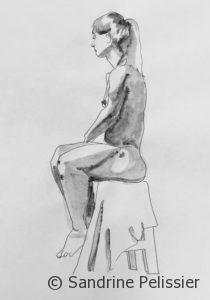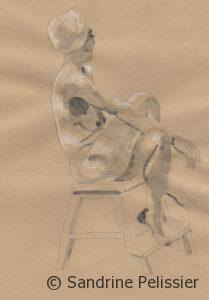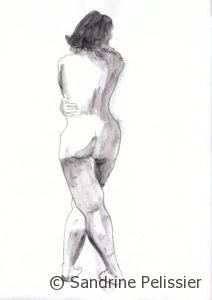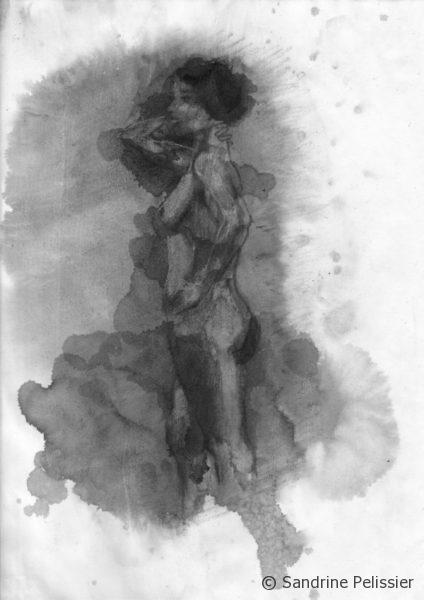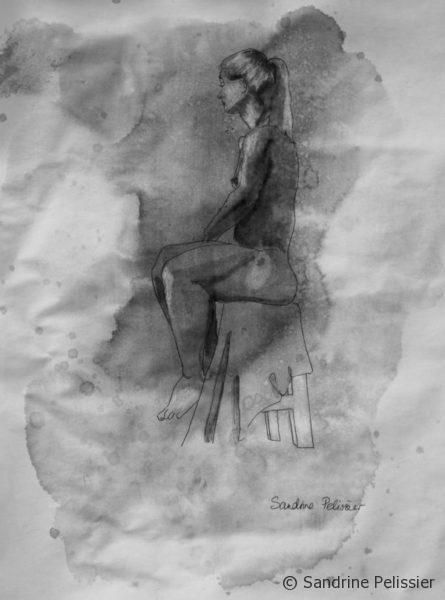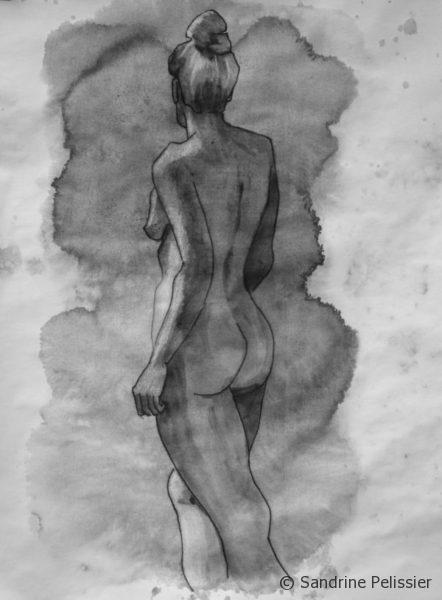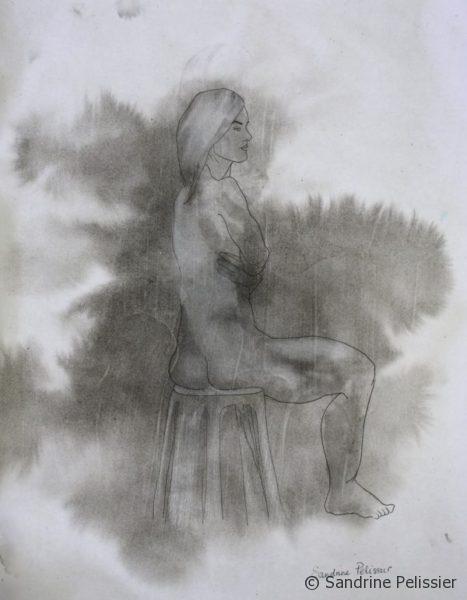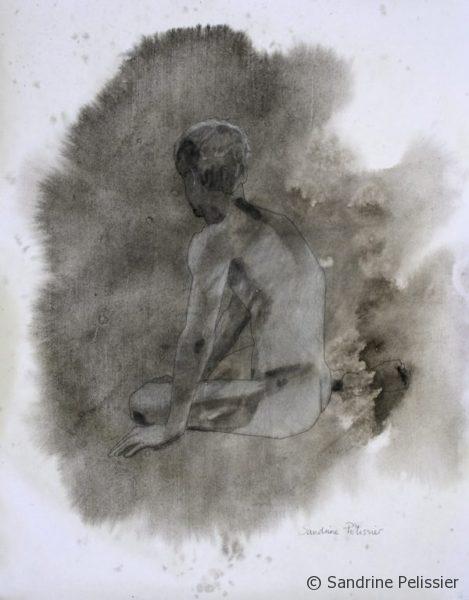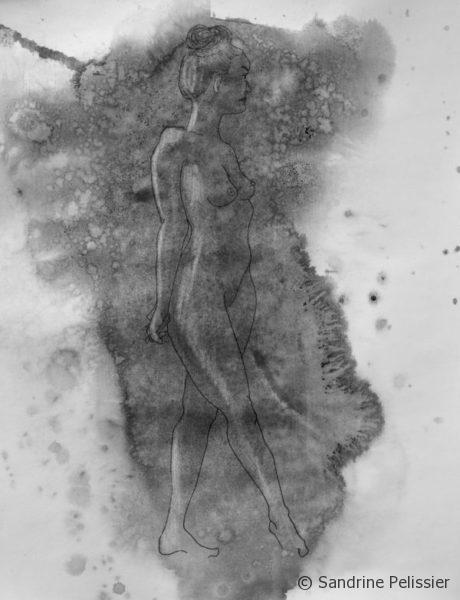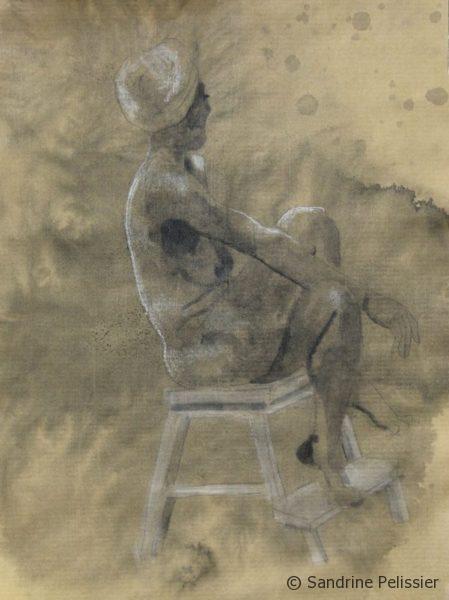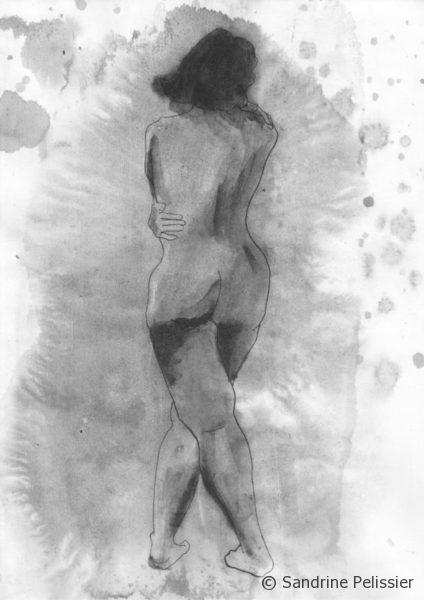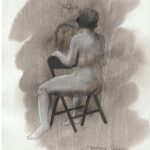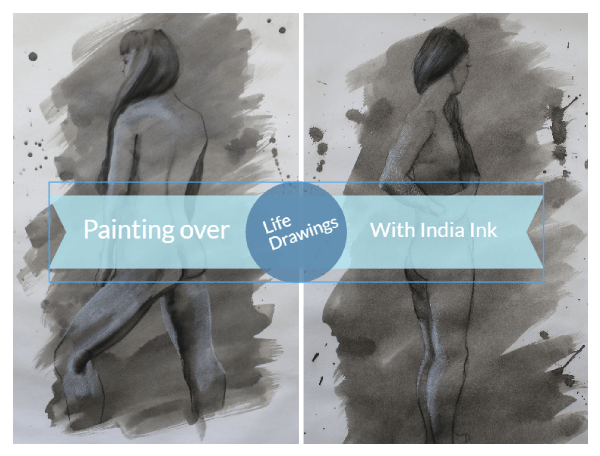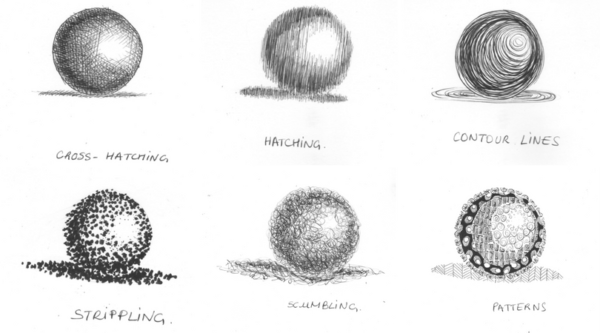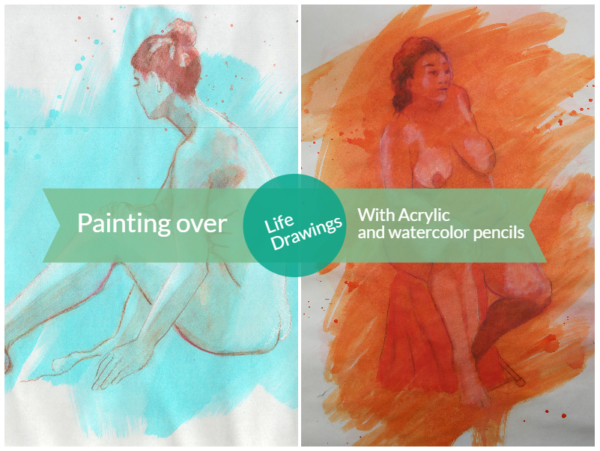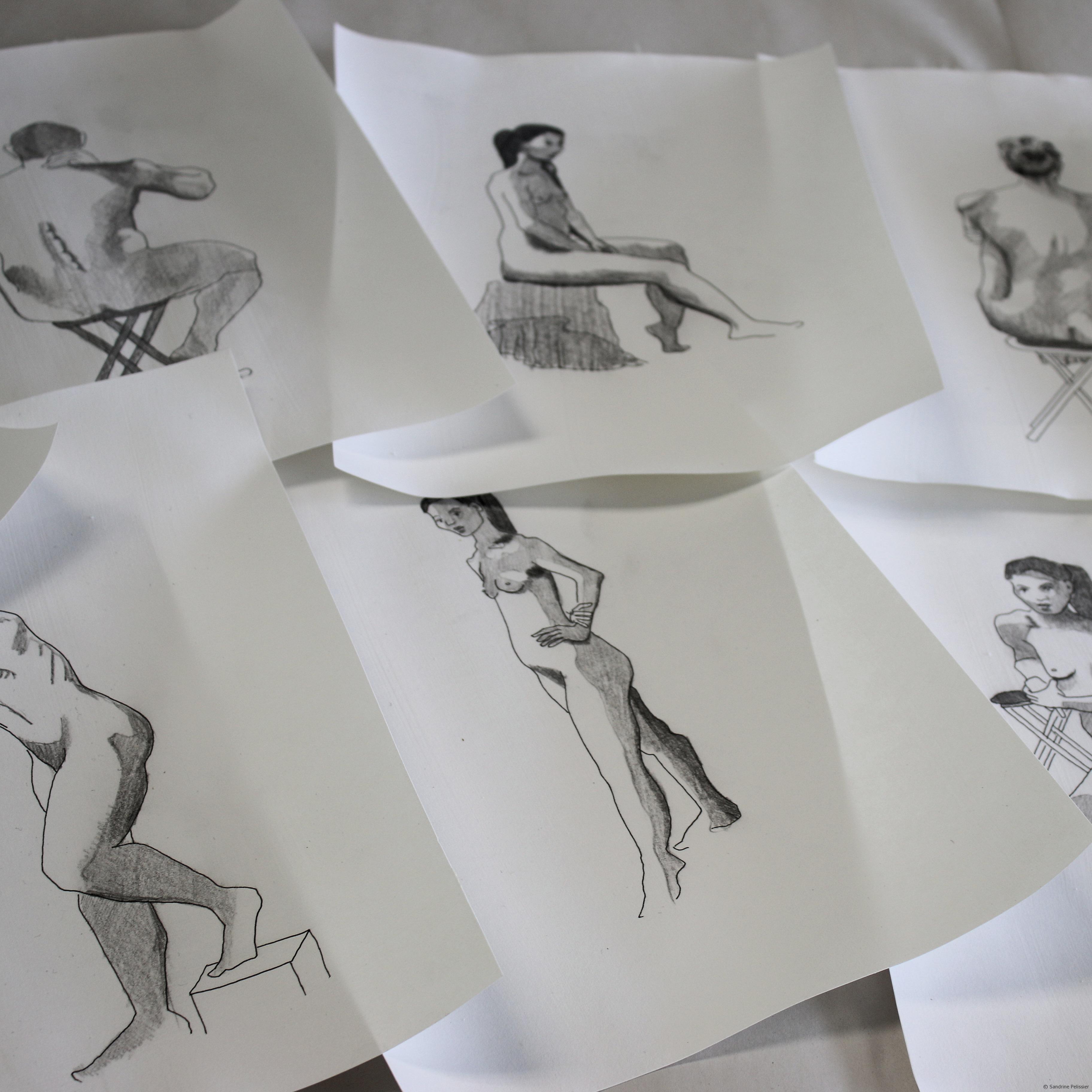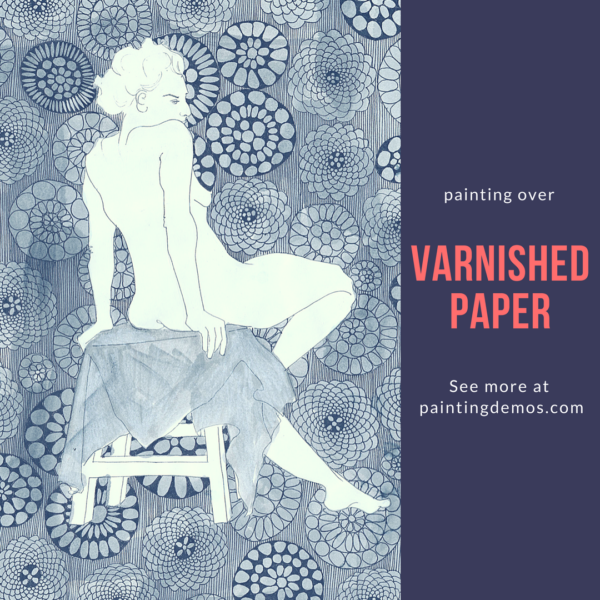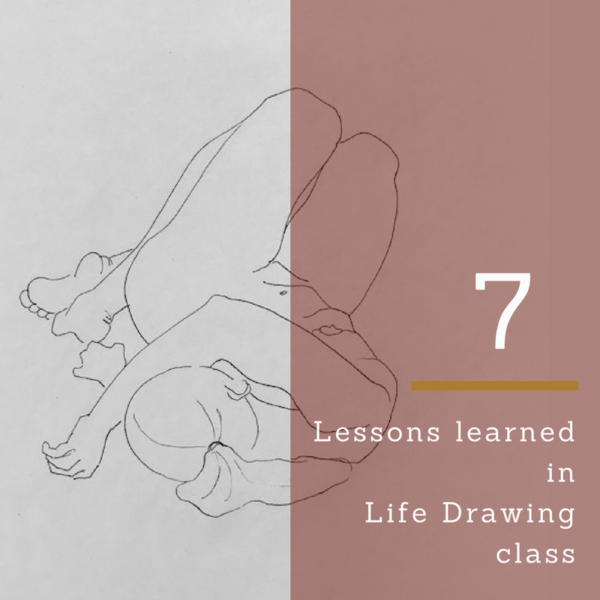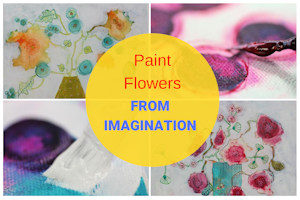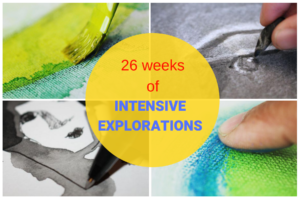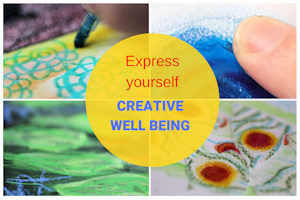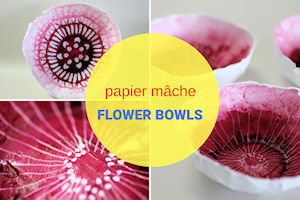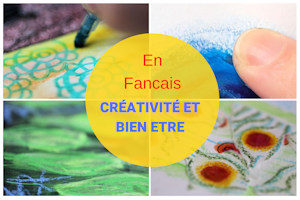Organized chaos : Reworking life drawings in mixed media
April 16, 2018 2023-05-10 10:59Organized chaos : Reworking life drawings in mixed media
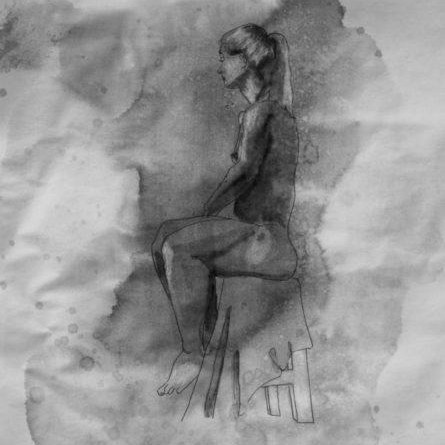
Organized chaos : Reworking life drawings in mixed media
I like to take my time when I draw but during the 20 minutes poses we do in class, I sometimes have enough time to work a bit on shading like in the following drawings
So, I like to rework some of the life drawings I did in class, when I can take all the time I want, after the class, in my studio.
Here is a fun technique you can try to add a bit of abstraction to your drawings, leaving some part to chance with random washes and textures but still being able to see a figure emerge from that chaos.
1- Take a picture of your drawing
Once we paint over your drawing it might be difficult to see the original shading, so you can take a picture you will be able to refer to, to remember where the highlights and the shading was on your original drawing.
You might also be interested in: How to take good pictures of your paintings
2- Paint a layer of clear gesso over your drawings
Clear gesso will make regular drawing paper more resistant to watery washes, the gritty texture of the gesso also will work well when adding colored pencils over the paint.

Select the drawings to want to rework and cover them with a layer of clear gesso.
I am a Blick Art Materials affiliate and I receive a small compensation for sales. That does not effect in any way the cost of the purchaser’s order but it helps me keeping the content of this blog free.

 |
Liquitex Acrylic Clear GessoThis Clear Gesso makes an excellent high-tooth, stable surface for most media. It dries clear to translucent, depending on thickness. Flexible and non-yellowing when dry. Mix Liquitex Clear Gesso with acrylic paint to create a colored gesso. |

Use a soft and large brush to apply gesso all over the surface of the drawings. Let them dry over a sheet of plastic.

Some of the ink or paint might smudge a bit when you apply gesso but we are going for a bit of a messy look anyway.
If your shading was done with charcoal, I recommend you spray a layer of workable fixative before applying the layer of clear gesso.
I am a Blick Art Materials affiliate and I receive a small compensation for sales. That does not effect in any way the cost of the purchaser’s order but it helps me keeping the content of this blog free.

 |
Krylon Workable Matte FixatifGives lasting protection to pencil, charcoal and chalk, yet erases easily. Clear, matte fixative is easy to work with. Dries in seconds, doesn’t wrinkle, smudge or smear. Spray can. |
Let dry the gesso overnight. If your paper buckles, you will be able to straighten it afterwards with a simple press system (see at the end of this post)
3- Paint random textured washes
The gesso will dry clear, the next step will be to paint random washes on top of your drawing.

Use a big large soft brush apply random washes, making these washes not too dark, so you will be able to somewhat see your drawing underneath once they had time to dry. You don’t want to paint anything precise, you are just painting an abstract background without paying too much attention to the figure drawing underneath.
I used fluid acrylic but you could also use Indian ink or black watercolor.
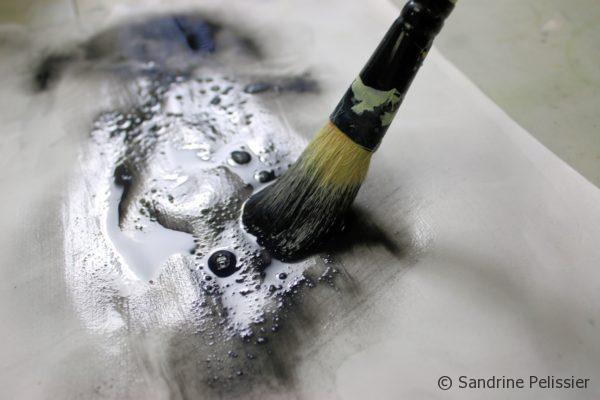
You can use any of your favourite technique to add texture.
You might also like: How to add visual texture to watercolor and acrylic washes.
Here I used mostly wet on wet washes, splattering, and water spraying.
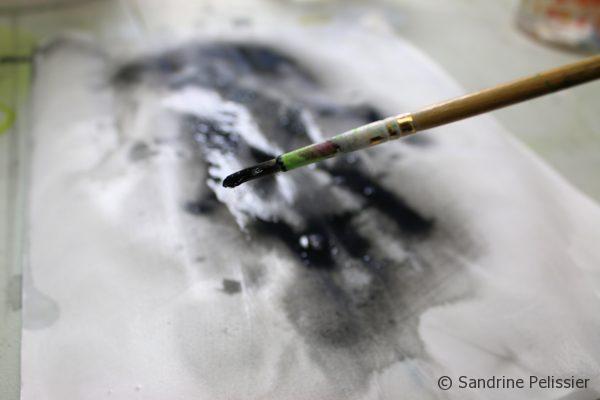
Splaterring fluid acrylic.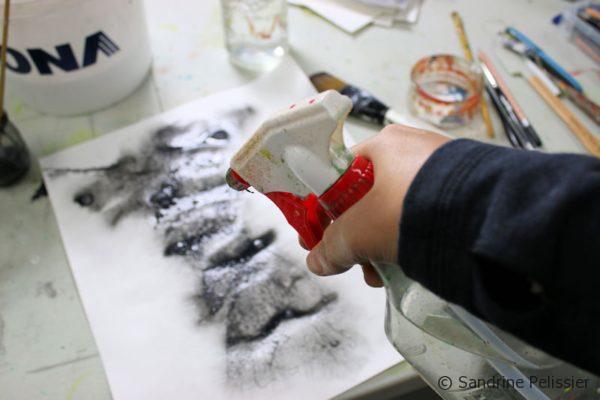
Spraying water on top of a wet wash
Let this wash dry
4 Add definition to your drawing
Now is the time to make some order emerge from the chaos of your abstract washes.
Once you wash has dried, you should be able to still see your drawing underneath. You can look at the reference picture of your original drawing to see where the highlights and shadows were located.
You might want to go over some of your lines with a marker or a dipping pen and ink.

You can retrieve the highlights with a white coloring pencil and you can darken some shadows with a black colored pencil or ink.
5- Flatten your drawing
Once you are done, you can flatten your drawing with a simple press system: weights over 2 sheets of Plexiglas. You could also use glass if you are careful.

A simple press system with 2 sheets of plexiglas and weights.


